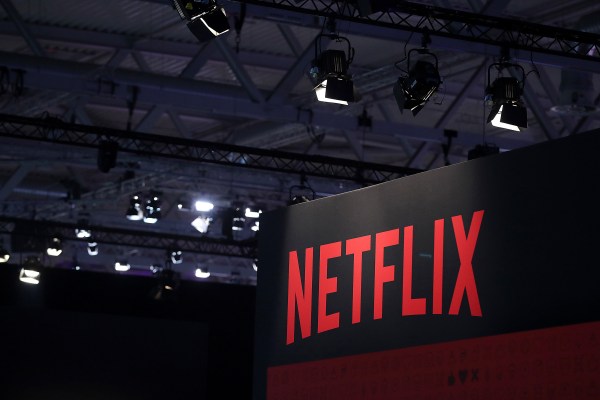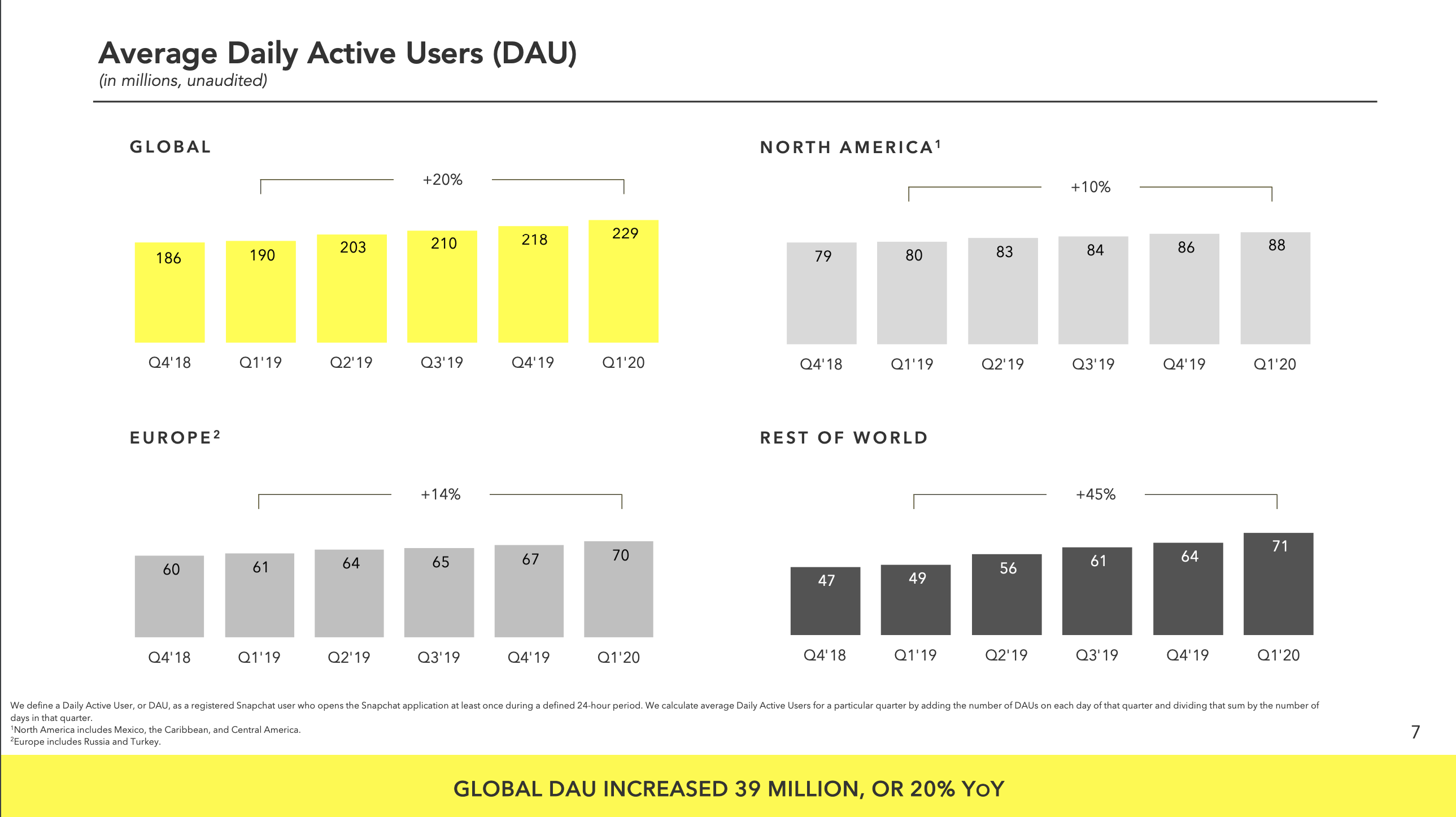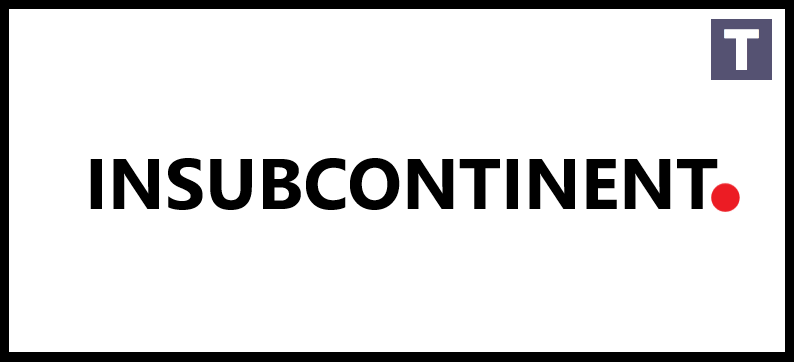Music
Trailers
DailyVideos
India
Pakistan
Afghanistan
Bangladesh
Srilanka
Nepal
Thailand
Iraq
Iran
Russia
Brazil
StockMarket
Business
CryptoCurrency
Technology
Startup
Trending Videos
Coupons
Football
Search
Download App in Playstore
Download App
Best Collections
Technology

With almost everyone stuck at home thanks to the COVID-19 pandemic, Netflix was widely expected to do well in the first quarter of 2020 — but it did even better than anticipated.
Before the current crisis, Netflix hadforecast 7 million net new paid subscribers for its just-released earnings. With the dramatically changed landscape, growth was obviously going to beat the forecast, but Q1 came in at more than double expectations, with 15.77 million paid net additions. That brings Netflixtotal paid subscriber count to 182.86 million.
Meanwhile, the company also reported revenue of $5.77 billion and earnings per share of $1.57 — roughly in line with Wall Street predictions on revenue and slightly behind EPS predictions of $1.65.
In itsinvestor letter, Netflix outlines three main impacts that the pandemic has had on its finances:
First, our membership growth has temporarily accelerated due to home confinement. Second, our international revenue will be less than previously forecast due to the dollar rising sharply. Third, due to the production shutdown, some cash spending on content will be delayed, improving our free cash flow, and some title releases will be delayed, typically by a quarter.
For now, Netflix is treating this growth as a short-term spike, with viewing and growth declining as &progress against the virus will allow governments to lift the home confinement soon.& So itforecasting a mere 7.5 million global net additions in Q2.
As for how the global halt to movie and TV production might affect the servicecontent plans, the company says there will only be a &modest& impact in Q2, mostly in language dubbing. This quarter will also see the launch of just-announced acquisitions like the Kumail Nanjiani-Issa Rae comedy &The Lovebirds& (originally slated for a theatrical release) and the Millie Bobby Brown mystery &Enola Holmes,& as well as new shows like &Space Force& and &Hollywood.&
&No one knows how long it will be until we can safely restart physical production in various countries, and, once we can, what international travel will be possible, and how negotiations for various resources (e.g., talent, stages, and post-production) will play out,& the investor letter says. &The impact on us is less cash spending this year as some content projects are pushed out. We are working hard to complete the content we know our members want and we&re complementing this effort with additional licensed films and series.&
The letter also includes viewership numbers about some recent releases, using the &chose to watch& metric that Netflix announced last quarter— itnow counting everyone who chose to watch a given show or movie and watched for at least two minutes. An impressive 64 million people chose to view &Tiger King.& But somehow, that didn&t quite match the 85 million people who chose to view the new Mark Wahlberg action movie &Spenser Confidential.&
As of 4:35pm Eastern, Netflix shares were fluctuating between a slight gain and a slight loss in after-hours trading — a sign, perhaps, that that spectacular growth is exactly what investors were expecting.
- Details
- Category: Technology Today
Read more: Netflix defeats development forecasts with 15.77 M web new subscribers
Write comment (98 Comments)
Epic Games is finally settling its feud — kind of — with Google and putting Fortnite onto the Google Play Store, but the studio sounds pretty pissed about it.
When Fortnite launched on mobile in 2018, Epic Games very notably sidestepped the Google Play Store and pushed users to download the title directly from their website, an effort made to avoid the substantial revenue cuts that Google takes from in-app purchases of Play Store downloads. At the time, the move was understandable for Epic, which was sitting on the hottest free-to-play game of the year that was pulling in substantial revenues from in-app purchases.
After 18 months of harsh rhetoric regarding platform gatekeeping, Epic Games says that Fortnite is now available for download on the Google Play Store, though it will still be downloadable from fortnite.com moving forward.
&Google puts software downloadable outside of Google Play at a disadvantage, through technical and business measures such as scary, repetitive security pop-ups for downloaded and updated software, restrictive manufacturer and carrier agreements and dealings, Google public relations characterizing third party software sources as malware, and new efforts such as Google Play Protect to outright block software obtained outside the Google Play store,& an Epic Games spokesperson said in a statement. &Because of this, we&ve launchedFortnite for Android on the Google Play Store.&
Epic Games withholding Fortnite from the Play Store was a very clear threat to Googleapp profits, though Google argued that downloading Android software outside of the Play Store presented a clear security threat to users who could unknowingly download malware from less reputable sites.
Epic Games clearly isn&t happy with the roadblocks Google has put up to dissuade users from downloading software from the web as well as the blanket warnings Android delivers regardless of whether the publisher is considered a trusted one.
For now, it seems Google has maintained the upper hand, though Epic Games clearly isn&t satisfied with their dealings with Google.
&We hope that Google will revise its policies and business dealings in the near future, so that all developers are free to reach and engage in commerce with customers on Android and in the Play Store through open services, including payment services, that can compete on a level playing field,& Epic Gamestatement further read.
We&ve reached out to Google for comment.
- Details
- Category: Technology Today
Read more: Epic Games launches Fortnite on the Google Play Store and they’re not happy about it
Write comment (99 Comments)The coronavirus pandemic has presented plenty of challenges for ad-reliant social networks, but Snap made clear it was not yet feeling significant negative effects with its Q1 earnings release today.
Snap surged 17% after-hours on news of its Q1 results after dropping nearly 4% during trading today. The company reported revenue of $462 million in line with precious guidance and besting Wall Streettempered expectations around $430 million. EPS was -$0.08, slightly worse than analyst expectations of a 7-cent loss.
Daily active users reached 229 million in the first-quarter, representing a 20% year-over-year gain, higher than the 224.5 million users that had been expected. Another interesting tidbit from the release was the 35% year-over-year growth in daily time spent watching content in Discover.

via Snap Earnings Slides
&Snapchat is helping people stay close to their friends and family while they are separated physically, and I am proud of our team for overcoming the many challenges of working from home during this time while we continue to grow our business and support those who are impacted by COVID-19,& CEO Evan Spiegel said in a statement accompanying the release.
2019 was a redemptive year for the social media company, which had seen steady declines in its share price since entering public markets. Since its last earnings release in early February, Snapstock price has dropped more than 30%, echoing similar declines seen by other social media companies in the midst of a broader market plunge.
A positive Q1 earnings report is welcome news for the downward-trending stock.
The full impacts of COVID-19 will be fully evident in the second-quarter filings, as Q1 includes financial performance in a February and early March which were much less impacted by pandemic fallout on the broader digital ad market.
This was a relatively quiet quarter for Snap in terms of product updates. Late last month, the company announced that it would be enabling Stories syndication to other apps as the company aims to make its developer platform more attractive to third-parties.
We&ll be updating with more information from the investor call.
- Details
- Category: Technology Today
Read more: Snap surges on earnings revenue beat and Q1 user gains
Write comment (95 Comments)Astronauts may make a second home of space, but even they have a first time going up. NASA is hoping to better prepare its crews for the challenges of space by sending them on suborbital flights from the likes of Virgin Galactic and Blue Origin — suggesting a potentially huge new market for the nascent private spaceflight industry.
Speaking at the Next Generation Suborbital Researchers conference in March, NASA Administrator Jim Bridenstine explained that the agency was considering private carriers now mainly because previously the possibility simply didn&t exist.
&Thata capability we as a nation have not had until recently,& he said, in remarks reported by Space.com.
Indeed, it is not entirely clear we have it even now. Virgin Galactic and Blue Origin have both demonstrated suborbital flights that have skimmed the very verge of space, but test flights and commercial flights to order are very different.
While Virgin is already selling tickets, thereno date set for the first flight with passengers. That flight will likely be this year, but without a reliable schedule and record of successful missions ithard to say that the capability is anything but aspirational at present. Thatthe nature of space travel — 99% of the way is still nowhere.
Still, it seems inevitable that Virgin, Blue or another provider will, some time in the next few years, offer suborbital flights with space for payloads and passengers. Thatsomething NASA seems hot to take them up on.
Itrather strange, but equally inescapable, that astronauts have to do all their training here on Earth. They can do all the simulators, &vomit comet& flights and pool training they like — but in the end, the only way to experience space is to go there.

Astronauts Bob Behnken and Doug Hurley, who will fly in the first Commercial Crew demo mission to the ISS, operate a simulator of the Crew Dragon capsule.
Until quite recently that meant getting on top of a hundred-million-dollar rocket and going up to the ISS, or in earlier days to the Moon in an orbiter or lander.
Therevery little one can do to prepare for that, but among those few things is going to space more cheaply and temporarily. Thatwhat suborbital flights make possible.
The rocket-powered ascent out of the atmosphere and resulting minutes of weightlessness are a suitable venue for training, testing and other operations that might otherwise have had to take place in orbit. And thatwhat NASA is hoping will take place — though no contracts have been signed just yet.
Although the first few suborbital flights from these providers were practically guaranteed to sell out, space tourism isn&t a proven industry and events like the present pandemic and inevitable economic downturn afterwards may in fact have a serious impact on such high-ticket items (or the ability to provide them). So the prospect of regular government contracts is almost certainly a huge relief to any company aiming to provide or support suborbital flights.
&This is a big shift for NASA, but itan important shift,& Bridenstine said. The shift is not simply relying more on private industry, which government programs have done lately, but using private flights as official training. He indicated that the flights would need to be extremely safe, though not quite to the same standards as flights to the ISS.
More training and testing, but on flights not actually run by NASA, would increase preparedness for new missions, speed up readiness and reduce complexity of existing programs that rely on NASA-flown missions for those capabilities. I&ve asked the agency for more information on this topic and will update the post if I hear back.
- Details
- Category: Technology Today
Read more: NASA may begin utilizing exclusive suborbital flights to train astronauts
Write comment (92 Comments)Houzz, an online platform for home renovation and design, has laid off 155 employees, roughly 10% of its staff, per an internal memo obtained by TechCrunch. Executive salaries also took a cut.
The company, last valued at $4 billion, confirmed the content of the memo in a statement to TechCrunch.
&Due to the impact of COVID-19 on small businesses in the home renovation and design space, and the resulting impact on our core business of pro subscriptions, we have made the incredibly difficult decision to part ways with 155 employees, which is approximately 10% of our team,& said a spokesperson.
In the internal memo, Houzz founders Adi Tatarko and Alon Cohen cite COVID-19impact on its core business: pro subscriptions. The subscriptions are for home remodeling and design professionals to find work. Due to COVID-19, many of those same professionals are facing project delays or cancellations as states promote social distancing and shelter in place.
Beyond serving as a marketplace for home renovators and customers, the company also sells furniture from third parties. Many consumers might not be thinking about renovating their bathroom or welcoming construction into their home as the pandemic shows up on doorsteps around the world.
While the layoffs are COVID-19 related, this isn&t the first sign of Houzz struggling as a business. Last month, Houzz fired 10 people and scrapped a plan to create furniture in-house. The move would have seen Houzz bring in-house some of the revenue it usually delegates to third-party manufacturers.
&At Houzz, we continually review our strategic investments, such as Private Label, to ensure that they are aligned to the current needs of our business and optimized for our continued growth,& the company said in a statement to TechCrunch back in March. &As a result of this process, we have made the difficult decision to discontinue our investment in Private Label at this time.&
The company also had some turbulence last year when it disclosed a data breach compromising 57 million records. A year prior, Houzz fired 10% of its staff to cut costs and restructure ahead of preparing for an IPO. And considering a number of factors, we&re guessing that plan to barrel toward the public markets may have changed.
Houzz will provide those laid off with severance packages based on tenure and will pay for benefits until the end of July. The company also said it will help those laid off find their next gig through resume writing, career coaching and network referrals.

- Details
- Category: Technology Today
Read more: Houzz lays off 155 employees, cuts executive wages
Write comment (95 Comments)GMexperiment with car sharing is over. The automaker Tuesday said its Maven car-sharing service, which launched in 2016, will shut down for good.
Maven had paused service due to the COVID-19 pandemic. The company sent an email to customers Tuesday that after examining the business, the car-sharing industry and COVID-19, it decided to shutter the service permanently. The Verge was the first to report the story.
The car-sharing service has struggled for months, long before COVID-19 upended the &shared& mobility sector. Last year, Maven scaled back and stopped service in nearly half of the 17 North American cities in which it operated. Maven continued to operate in Detroit, Los Angeles, Washington, D.C. and Toronto. However, two programs within Maven, its consumer car-sharing and peer-to-peer service, also stopped in Washington, D.C. Only a program directed at gig workers was still operational in that city.
GM confirmed to TechCrunch that it has started to wind down Maven. All assets andresources will be transferred to GMGlobal Innovation organization, as well as the larger enterprise, according to a GM spokesperson.
The company confirmed that all operations should be concluded by later this summer. Maven had already suspended its consumer car-sharing and a peer-to-peer service due to COVID-19. A separate program directed at gig economy workers has been &very limited and will continue to wind down,& a GM spokesperson said.
&We&ve gained extremely valuable insights from operating our own car-sharing business,& Pamela Fletcher, GMvice president of global innovation, said in an emailed statement. &Our learnings and developments from Maven will go on to benefit and accelerate the growth of other areas of GM business.&
Below is a screenshot of the email sent Tuesday morning to Maven customers.

Image Credits: Screenshot/Maven email
The company doesn&t have plans to re-enter the car-sharing business. The company told TechCrunch that it &will take the great insights we&ve gained from Maven and leverage its car-sharing technology to provide new GM fleet services, and explore other new service offerings.&
Maven was designed to bring and expand several of GMexisting test programs under one brand.At the time of its launch, Maven was essentially three car-sharing services in one that included a city-based service that rented GM vehicles by the hour through an app and another for urban apartment dwellers in Chicago and New York.
Maven developed and launched a smartphone app, which was used by customers to search for and reserve a vehicle, unlock the door and remotely start, cool or heat the car.
It was an important launch for GM and its Chairman and CEO Mary Barra, who used a study commissioned in the wake of the ignition switch engineering scandal to accelerate her plans to transform the culture and operations at the automaker. Dozens of executives participated in transformational leaders programs; Maven was one of the fruits that spun out of that.
A wave of other initiative and investments were announced in 2016 that showed GMshift in interest toward unconventional transportation businesses that were adjacent to its core business of producing, selling and financing cars, trucks and SUVs to consumers.
But Maven never quite settled on one business model. The car-sharing service continued to evolve, leaving and entering cities or tweaking where it offered certain programs. For instance, thecompany launched in 2017 Maven Reserve in Los Angeles and San Francisco to allow customers to rent its GM-branded vehicles for a month at a time. It also started Maven Gig in hopes of tapping into a growing demand from rideshare and delivery app drivers.
Maven then launched a service in summer 2018 in Chicago, Detroit and Ann Arbor that let owners rent out their personal GM-branded vehicles through its Maven car-sharing platform. The peer-to-peer car rental service was designed to operate in a similar fashion to how Turo and Getaround work.
The servicedemise seemed to begin after the company lost its CEO Julia Steyn in January 2019. It scaled back a few months later and was only operating in a handful of cities up until the COVID-19 pandemic put further pressure on the business.

- Details
- Category: Technology Today
Read more: GM departures car-sharing organisation as well as closes down Virtuoso
Write comment (100 Comments)Page 917 of 1437

 10
10





